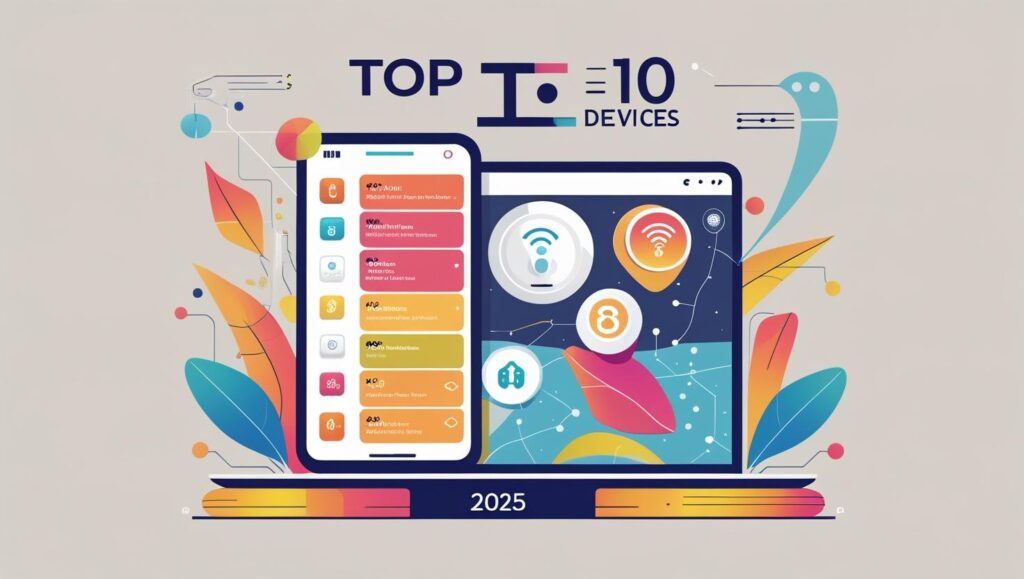Top IoT Devices You Should Know in 2025: Connecting Our World
The Internet of Things (IoT) isn’t just a futuristic concept anymore; it’s a rapidly expanding reality, subtly weaving itself into the fabric of our daily lives. From smart homes that anticipate our needs to cities that monitor their own pulse, connected devices are redefining convenience, efficiency, and safety. As we step further into 2025, the landscape of IoT is more dynamic and innovative than ever, offering a glimpse into a truly interconnected world. Whether you’re a tech enthusiast, a homeowner looking to upgrade, or a business seeking operational efficiencies, understanding the **top IoT devices you should know in 2025** is crucial. This article dives deep into the most impactful and exciting IoT innovations making waves across various sectors, highlighting how they’re transforming everything from personal well-being to urban infrastructure.
The Expanding Horizon of IoT: Beyond the Smart Home
While smart home devices like voice assistants and connected thermostats were the early flagbearers of IoT, the technology’s reach has expanded exponentially. Today, IoT encompasses a vast ecosystem of devices, sensors, software, and platforms that collect and exchange data over the internet. This interconnectedness allows for unprecedented levels of automation, data analysis, and predictive capabilities across diverse industries. We’re seeing IoT adoption skyrocket in healthcare, manufacturing, agriculture, retail, and urban planning, promising a future where our environments are not just reactive but proactive, learning and adapting to our needs.
Driving Forces Behind IoT Growth in 2025
Several key factors are accelerating the proliferation of IoT devices this year. The continued rollout of 5G networks provides the high-speed, low-latency connectivity essential for seamless IoT operations. Advances in artificial intelligence and machine learning enable devices to process data more intelligently, making them truly “smart.” Furthermore, increased focus on sustainability and efficiency is pushing businesses and consumers towards IoT solutions that optimize resource usage and reduce waste. Finally, the growing demand for personalized experiences is fueling innovation in wearables and health monitoring devices, putting individual well-being at the forefront of IoT development.
Top IoT Devices to Watch in 2025 Across Key Sectors
Let’s explore the most significant IoT devices and categories making an impact in 2025.
1. Hyper-Personalized Smart Home Hubs
Beyond simple voice commands, 2025’s smart home hubs are evolving into true central nervous systems for your residence. These devices are leveraging AI to learn your routines, anticipate your preferences, and proactively manage lighting, temperature, security, and entertainment systems. They integrate seamlessly with a wider array of appliances and sensors, offering predictive maintenance alerts and energy optimization strategies based on real-time data and even local weather forecasts. Expect more intuitive interfaces, enhanced privacy features, and greater interoperability between different brands.
2. Advanced Wearable Health Monitors
Wearable technology has moved beyond basic fitness tracking. In 2025, we’re seeing advanced smartwatches and specialized health patches that offer continuous, medical-grade monitoring of vital signs, glucose levels, heart rhythms, and sleep patterns. These devices are becoming critical tools for preventative healthcare, enabling early detection of potential issues and facilitating remote patient monitoring, especially for chronic conditions. Integration with telehealth platforms allows for seamless data sharing with healthcare providers.
3. Predictive Maintenance Sensors for Industry (IIoT)
In manufacturing and industrial settings, the Industrial Internet of Things (IIoT) is revolutionizing operations. Wireless sensors attached to machinery are collecting real-time data on performance, vibration, temperature, and wear. This data is fed into AI algorithms that can predict equipment failures before they happen, enabling proactive maintenance, reducing costly downtime, and extending the lifespan of critical assets. This leads to significant operational efficiencies and cost savings for businesses.
4. Smart Agriculture Sensors and Drones
IoT is transforming agriculture, making farming more efficient and sustainable. Soil sensors monitor moisture, nutrient levels, and pH, allowing for precision irrigation and fertilization. IoT-enabled drones equipped with multispectral cameras provide detailed insights into crop health, pest infestations, and yield predictions. Automated irrigation systems and robotic harvesters, guided by IoT data, are helping farmers optimize resource use, increase productivity, and reduce environmental impact.
5. Connected Fleet Management Systems
For logistics and transportation companies, IoT-powered fleet management systems are indispensable. GPS tracking, engine diagnostics, driver behavior monitoring, and cargo condition sensors provide real-time visibility into entire fleets. This data optimizes routes, improves fuel efficiency, enhances safety, and ensures timely deliveries. Predictive analytics can even forecast maintenance needs for vehicles, further streamlining operations.
6. Smart Retail Analytics and Personalized Shopping Experiences
In retail, IoT devices are enhancing the customer experience and optimizing store operations. Smart shelves with weight sensors track inventory in real-time, preventing stockouts. Beacons in stores can send personalized promotions to customers’ smartphones based on their location and preferences. IoT-powered cameras provide anonymized insights into customer traffic patterns and engagement, helping retailers optimize store layouts and staffing.
7. Environmental Monitoring Sensors for Smart Cities
Smart cities are leveraging IoT to become more sustainable and livable. Networks of sensors monitor air quality, water levels, noise pollution, and traffic flow. This data helps urban planners make informed decisions about infrastructure development, traffic management, and emergency response. Smart waste bins that signal when they’re full optimize collection routes, reducing fuel consumption and emissions.
8. AI-Powered Security Cameras with Facial Recognition
The evolution of security cameras, driven by IoT and AI, is remarkable. Beyond simple recording, these cameras now feature advanced facial recognition for access control, anomaly detection for suspicious behavior, and integration with smart alarm systems. They offer real-time alerts and can differentiate between pets, vehicles, and humans, reducing false alarms and providing more accurate security insights for both homes and businesses.
9. Smart Appliances with Self-Diagnosis and Ordering
Kitchens and laundry rooms are becoming increasingly intelligent. Refrigerators can track inventory and suggest recipes, even ordering groceries when supplies run low. Washing machines can detect fabric types and adjust cycles automatically. These appliances leverage IoT to perform self-diagnostics, alerting users or service centers to potential issues before they become major problems, enhancing convenience and reducing waste.
10. Augmented Reality (AR) Glasses with IoT Integration
While still emerging, AR glasses are poised to become significant IoT devices. In 2025, we’re seeing more practical applications, such as providing real-time navigation overlays, contextual information about objects in your view, or integrating with smart home controls. For industries, they offer hands-free access to data and remote assistance, proving invaluable for field service technicians and complex assembly tasks.
The Future is Connected: Embracing the IoT Revolution
The proliferation of **top IoT devices you should know in 2025** is not just about adopting new gadgets; it’s about embracing a paradigm shift towards a more connected, efficient, and intelligent world. From enhancing personal well-being through health monitoring to optimizing global supply chains, IoT is driving unprecedented innovation. As these devices become more sophisticated, secure, and seamlessly integrated, their impact on our lives will only continue to grow. Staying informed about these advancements is key to leveraging their potential, ensuring we build a future that is not just technologically advanced but also sustainable and human-centric. Are you ready to embrace the power of connection?



